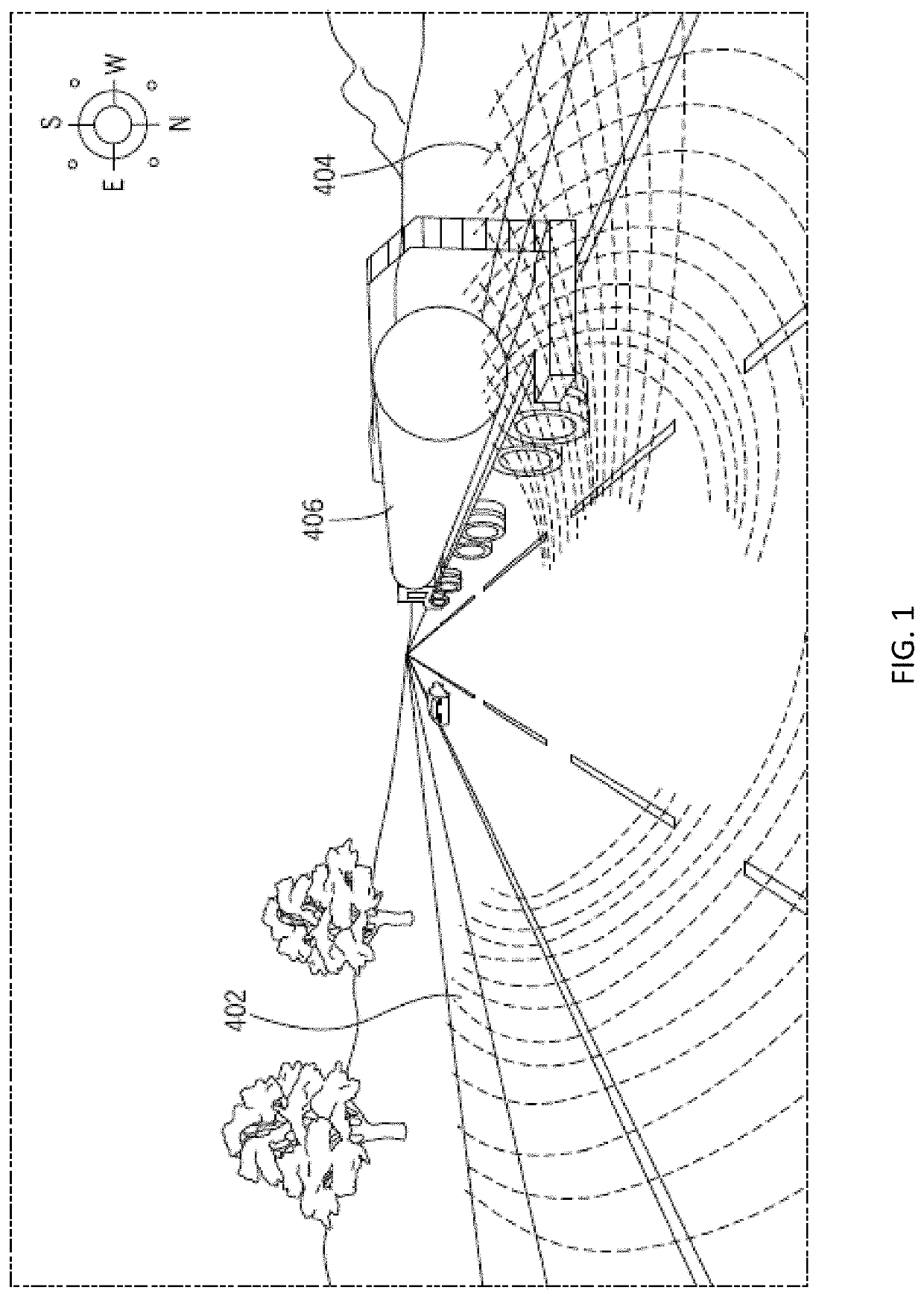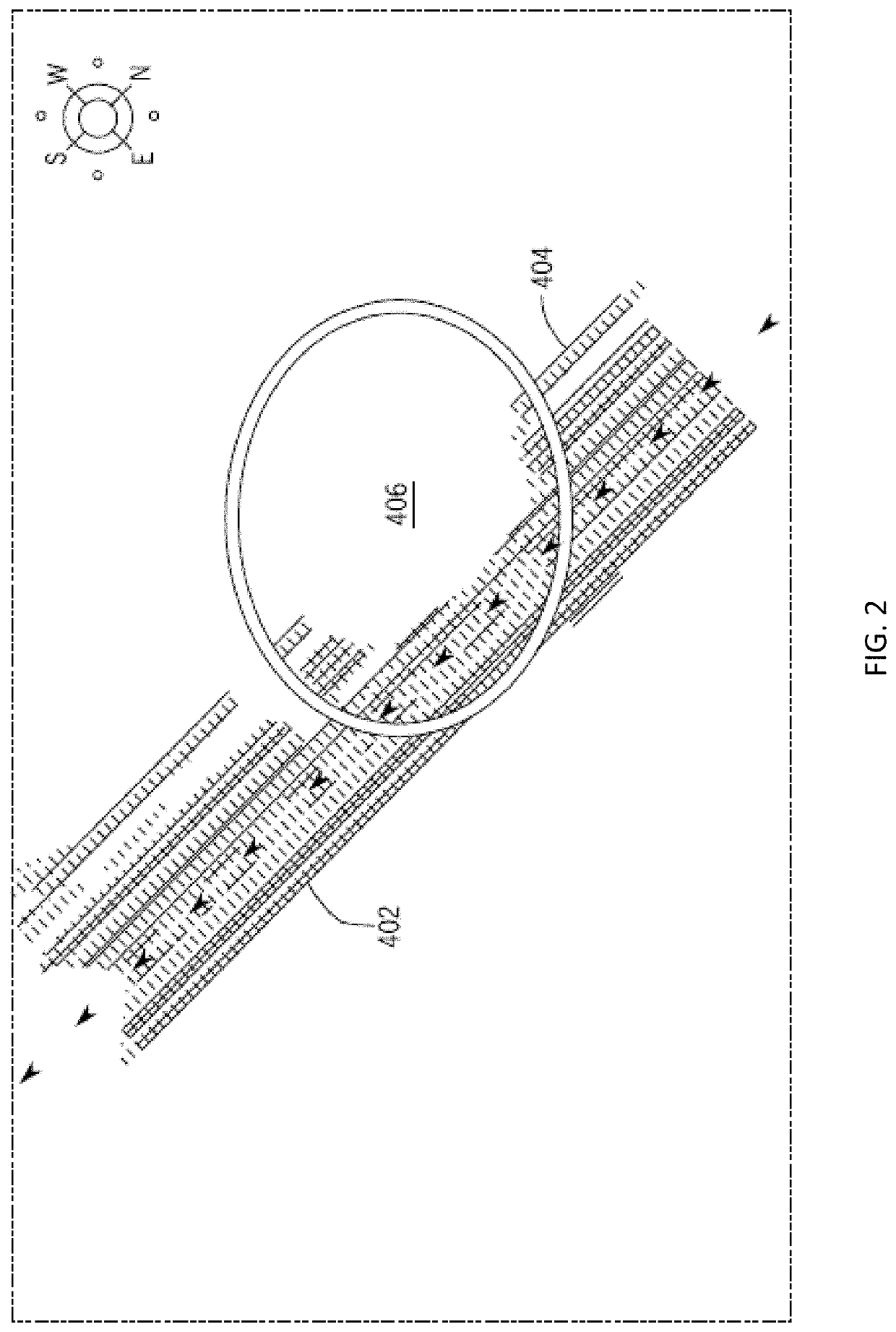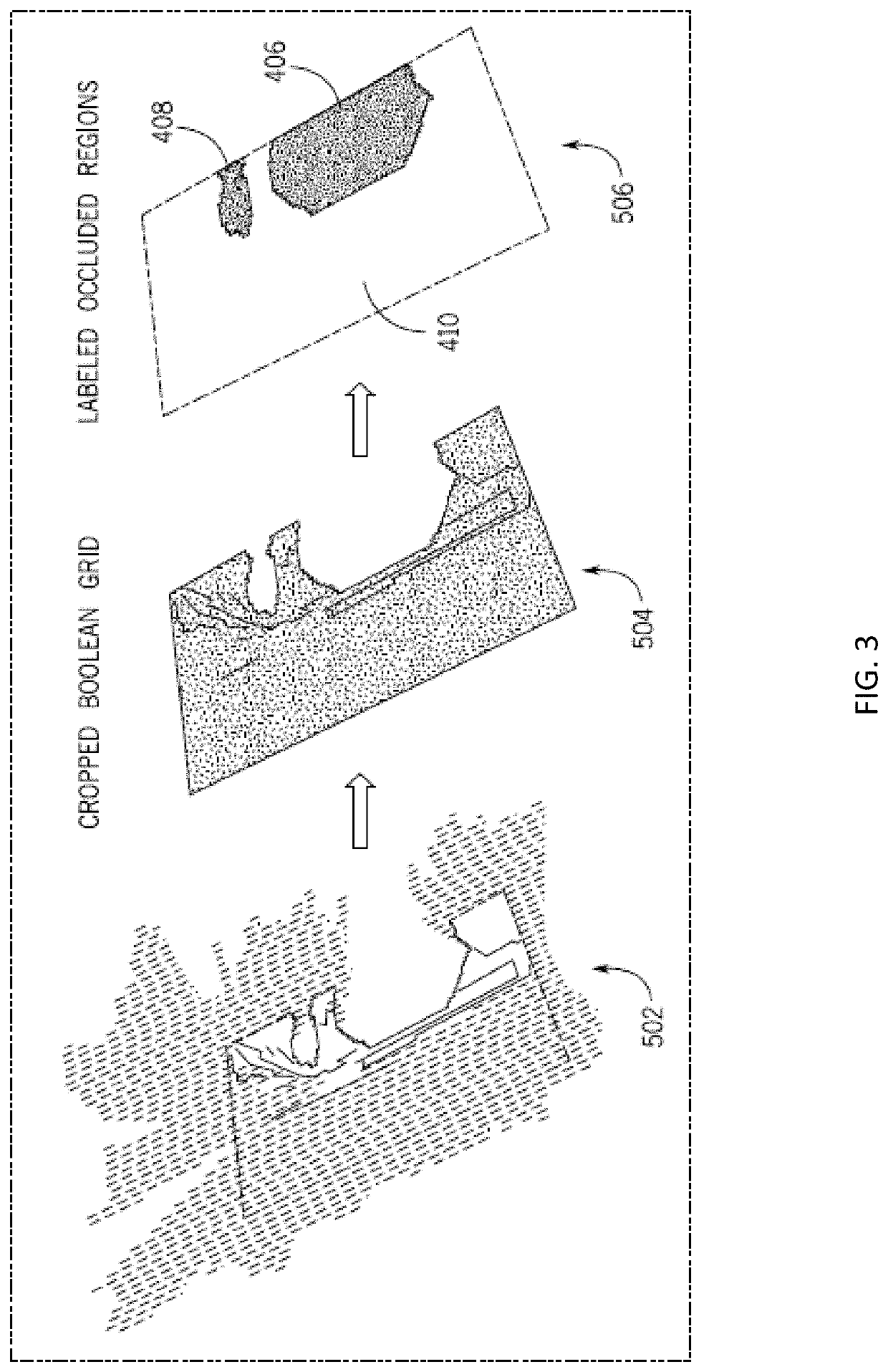Automatic occlusion detection in road network data
a technology of road network data and automatic occlusion detection, applied in the direction of image enhancement, instruments, and using reradiation, can solve the problems of lidar occlusion, false negative of pertinent roadside objects blocked by semi-trucks, and detriment to the performance of localization algorithms
- Summary
- Abstract
- Description
- Claims
- Application Information
AI Technical Summary
Benefits of technology
Problems solved by technology
Method used
Image
Examples
embodiment 1
[0118
[0119]A method of detecting an occlusion from point cloud data, the method comprising:[0120]receiving, by a server from a data collection vehicle, point cloud data for a scene;[0121]generating, by the server from the point cloud data, a grid representation of a region of interest in the scene, wherein the grid representation comprises free space, occupied space and hidden space; and[0122]identifying, by the server, an occlusion in the region of interest based on the hidden space of the grid representation.
embodiment 2
[0123
[0124]The method according to embodiment 1, wherein the region of interest is defined based on a traffic lane model.
embodiment 3
[0125
[0126]The method of any of the preceding embodiments 1 to 2, wherein the free space corresponds to a location between a sensor location and a corresponding object location identified from the point cloud data, the occupied space corresponds to the object location identified from the point cloud data, and the hidden space corresponds to a location without point cloud data.
PUM
 Login to View More
Login to View More Abstract
Description
Claims
Application Information
 Login to View More
Login to View More - R&D
- Intellectual Property
- Life Sciences
- Materials
- Tech Scout
- Unparalleled Data Quality
- Higher Quality Content
- 60% Fewer Hallucinations
Browse by: Latest US Patents, China's latest patents, Technical Efficacy Thesaurus, Application Domain, Technology Topic, Popular Technical Reports.
© 2025 PatSnap. All rights reserved.Legal|Privacy policy|Modern Slavery Act Transparency Statement|Sitemap|About US| Contact US: help@patsnap.com



